
Friedhof Wulsdorf
In the location's words:
The Wulsdorf cemetery was established in 1871 for the deceased of the municipality of Bremerhaven outside the city limits on Prussian territory. The population of Bremerhaven was growing rapidly at the time, and the right of Bremerhaven citizens to be buried in the neighboring municipality of Lehe, which had been guaranteed since 1827, had become null and void. For reasons of hygiene, but also for geological reasons, it was not possible to build a new cemetery in the limited urban area of Bremerhaven. The construction of the new cemetery outside the territory of Bremen required the approval of the highest political circles in Prussia, for which the boards of six Bremen sickness and death funds had appealed in a petition to Prince Bismarck in 1869.
The garden architect Wilhelm Benque designed the Wulsdorf cemetery in a landscape style as a so-called "park cemetery", in which curved paths, loosely grouped clusters of trees and the principle of asymmetry are important design features. As a park cemetery, the Wulsdorf cemetery even predates the much better-known first municipal central cemetery in Hamburg-Ohlsdorf, which was built six years later and, like the Bremerhaven cemetery in Wulsdorf, is one of the early examples of non-denominational cemeteries built by the municipality.°
Wilhelm Benque's design was not aimed at making the best economic use of the available space, but at embedding the graves in a varied park landscape. Even though the long history of use, with the constant reallocation of gravesites and the consolidation of formerly unoccupied areas, has interfered with the original park structure, important elements have been preserved thanks to the large solitary trees and the preserved pathways. The best place to get an impression of Benque's original intention today is in the area of field 18, where the war memorial in honor of the fallen of the First World War was integrated in 1919.°
As Wulsdorf was located on Prussian territory, it had to comply with Prussian building and health regulations. The supervision of the funeral train from Bremerhaven to Lehe had already been subject to the Prussian authorities and officials - now consideration had to be given to the arrival and departure of trains at the old Geestemünde railroad station, which was located in Klußmannstraße (Bahnhofsallee) at the time. For this reason, two decades after the opening of the cemetery in 1888, the city of Bremerhaven erected a chapel in the Wulsdorf cemetery, designed by the talented neo-Gothic artist Louis Löschner, who had previously completed the Bürgermeister-Smidt memorial church in succession to Simon Loschen, and now integrated it into the cemetery complex as a dignified prelude. A mortuary is located in the high base of the chapel, in which the deceased could be laid out between the time of their death and burial and which put an end to the unpopular funeral processions through the city. After the First World War, the Bremerhaven City Planning Office then built a residential building for the gardener on Weserstrasse in 1919-20, based on designs by the city planning officer Julius Hagedorn. The new building at the main entrance also took on the function of a waiting hall and integrated a store and public toilets for visitors. Just as the chapel is an impressive and high-quality work of historicism, the Gärtnerhaus, monumental in appearance, exquisite in the design of the façades and elegant in its restrained neoclassical decoration, is one of the best surviving examples of its era in Bremerhaven.
The cemetery area has been enlarged several times. Initially, the cemetery in Wulsdorf grew with the expansion of the city of Bremerhaven, with extensions in the years around 1900 (sections 19-22) and in the 1920s (sections 23-29) on the northern flank. This completed the older part, which is now to be the subject of the protected property. Sections 30-32 were added in 1967 and 1978.
Similar pages
 Public Space
Public Space
Bremerhaven, Am Geestev…
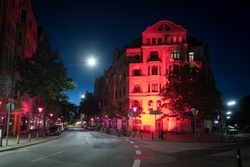 Public Space
Public Space
Alte Bürger
 Public Space
Public Space
Zolli
 Public Space
Public Space
Theodor-Heuss-Platz
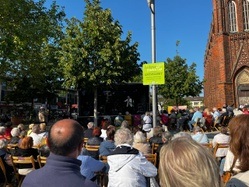 Public Space
Public Space
Platz an der Großen Kir…
 Public Space
Public Space
Willy-Brandt-Platz Brem…
 Public Space
Public Space
Schaufenster Fischereih…
 Public Space
Public Space
Hafenschlepper "Stier"
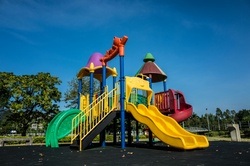 Public Space
Public Space
Leher Pausenhof
 Public Space
Public Space
Lloyd Dock
 Public Space
Public Space
Bogenstraße
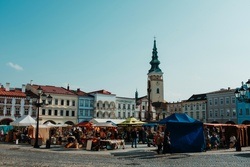 Public Space
Public Space
Ernst-Reuter-Platz Brem…
 Public Space
Public Space
Julius-Leber-Platz
 Public Space
Public Space
Urbane Insel /Wencke-Do…
 Public Space
Public Space
Lloydplatz /Neuer Hafen
 Public Space
Public Space
Fußgängerzone Bremerhav…
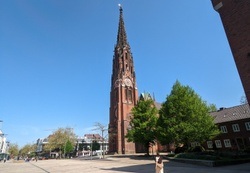 Public Space
Public Space
Große Kirche
 Public Space
Public Space
Bewegungspark an der Ge…
 Public Space
Public Space
Lange Nacht der Kultur
 Public Space
Public Space
Goethestraße 31-60

